The 1970 Plymouth Road Runner Coupe wasn’t built for subtlety—it was built to move, and move fast. But every once in a while, one rolled off the line that hit different. This V-Code car is one of just 222 automatics with the 440 Six Barrel under the hood, and it’s got the kind of factory spec that makes you stop and take a second look. TX9 Black Velvet paint, Air Grabber hood, and a dead-serious 3.55 Sure Grip rear end—this thing wasn’t ordered for show. It was ordered to run.One of Just 222 Built
One of Just 222 Built

In 1970, Plymouth built only 222 Road Runner Coupes with the V-Code 440 Six Barrel and an automatic transmission. That’s rare territory, even by muscle car standards. Most buyers chasing big power went with the hardtop or convertible.
This particular build adds to the scarcity. It’s not just about the powertrain—it’s about how it was spec’d. The coupe body style kept weight down and structure tight, making it a solid performer. While hardtops got the spotlight, these coupes did the work—and they’re even harder to find today.
TX9 Triple Black Done Right
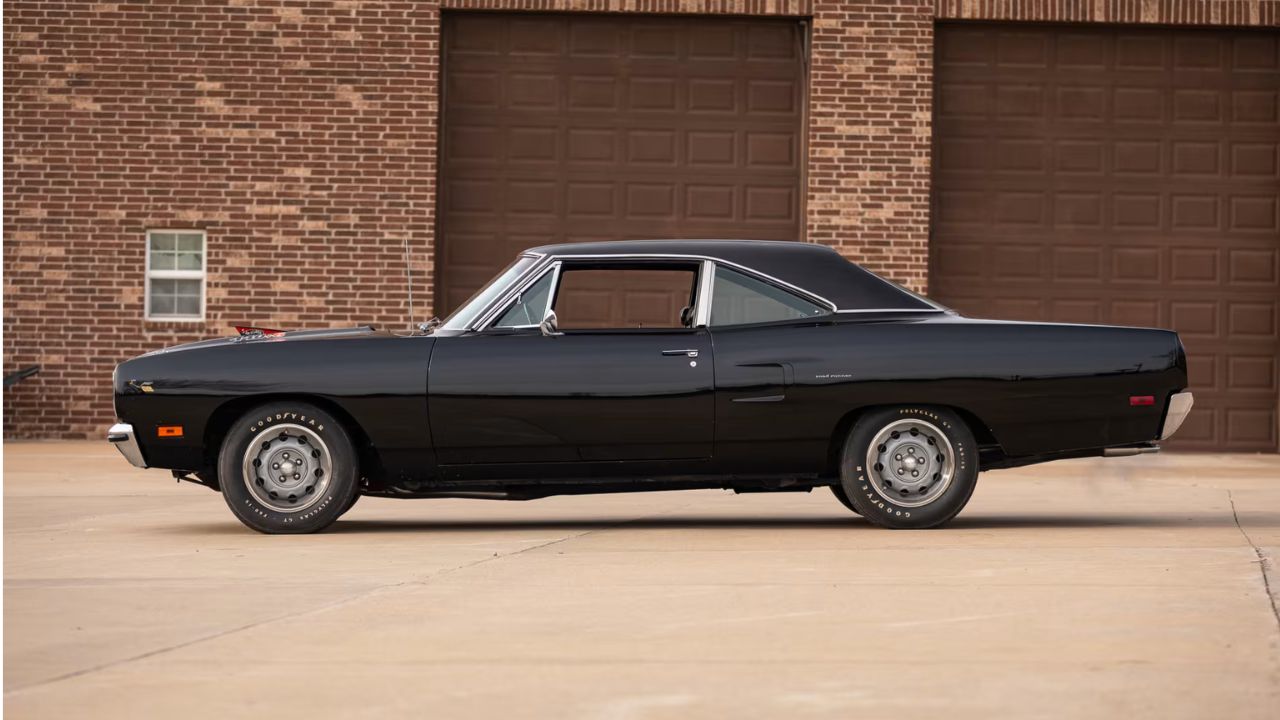
This car came in factory TX9 Black Velvet paint, black vinyl top, and black interior. Triple black was always a gutsy choice. It shows everything—every curve, every crease—but when it’s clean, it’s tough to beat.
In 1970, TX9 wasn’t all that common on Road Runners. Most buyers leaned toward high-impact colors like TorRed or Lemon Twist. But this spec gives the car a mean, understated look that works especially well with the flat hood stripes and dark grille. It’s subtle muscle—if there’s such a thing.
V-Code 440 Six Barrel Punch
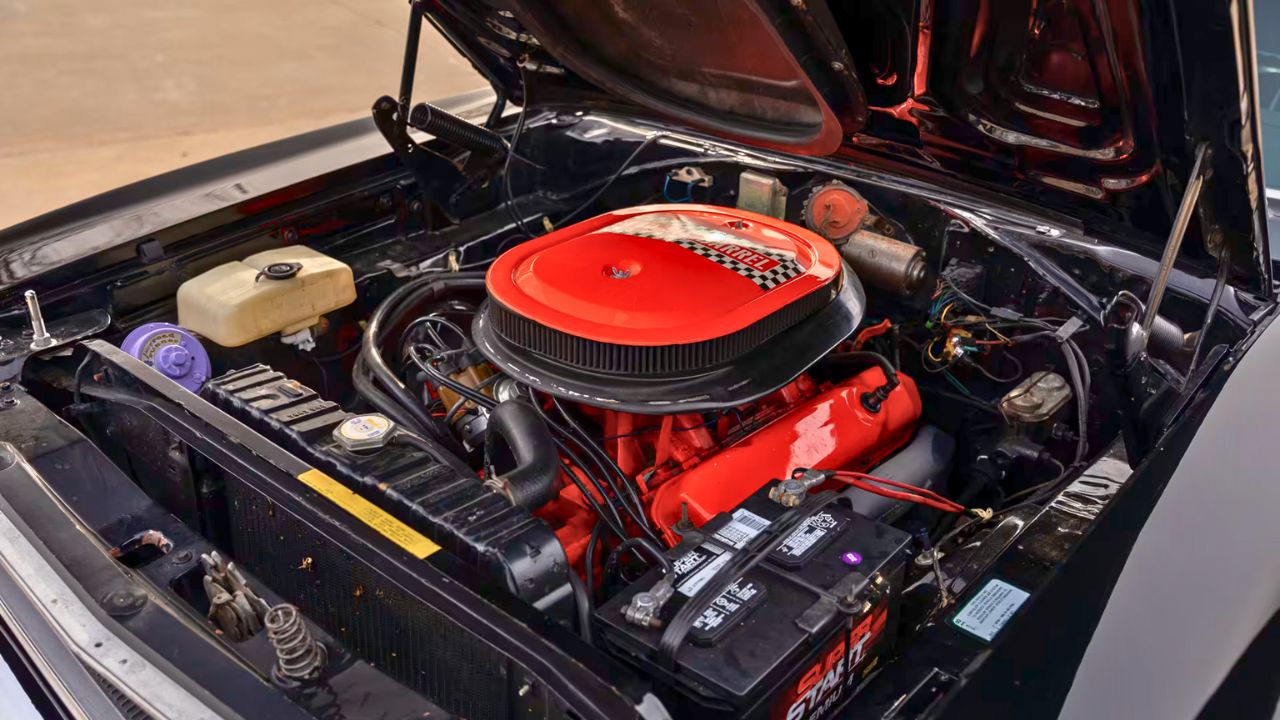
Under the hood sits the V-code 440 Six Barrel—three Holley two-barrels stacked on an aluminum intake. Factory rated at 390 horsepower and 490 lb-ft of torque, it was right up there with the Hemi in street performance.
Throttle response was instant once those outboard carbs opened up. It pulled hard through every gear and didn’t need much encouragement to break loose. The Six Barrel setup also made tuning a little trickier, but the tradeoff was real-world speed that rivaled anything Detroit had on tap in 1970.
Torqueflite + 3.55 Gears = Balance
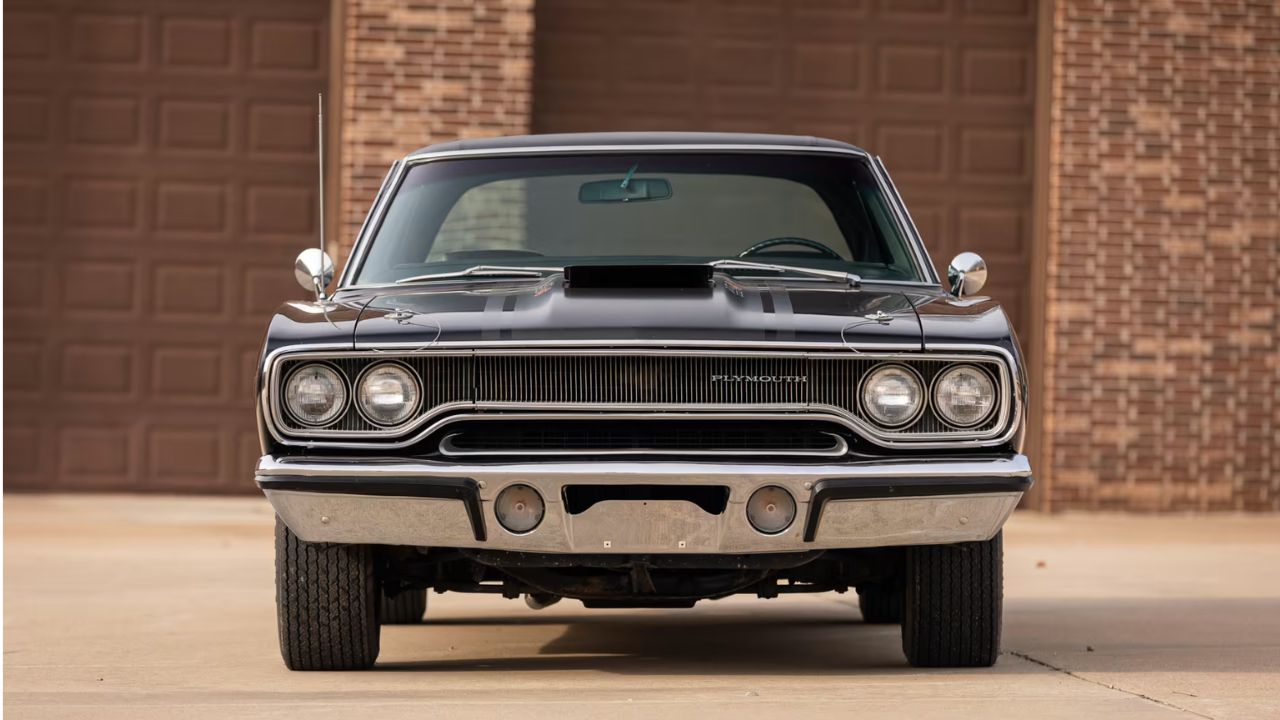
This car ran a TorqueFlite 727 automatic backed by a Sure Grip 8 3/4-inch rear with 3.55 gears. It wasn’t just fast—it was usable. The combo made for strong launches without winding out too high on the highway.
The TorqueFlite was already a trusted unit by 1970—plenty stout for big-block power, and nearly bulletproof with good maintenance. Matched to a 3.55 gear, it gave this Road Runner the kind of everyday drivability you didn’t usually get in a car with nearly 400 horsepower under your right foot.
Factory Air Grabber Hood

This car came with the N96 Air Grabber hood—a vacuum-operated setup that let the driver flip a switch and pop open a scoop right on top of the engine. It wasn’t for show. It directed cold air into the carburetors at speed.
It was an option, not a given, and not every buyer stepped up for it. But on a V-Code car, it just fits. It added a visual edge, but more importantly, it gave those carbs a real shot of dense, cool air when the engine needed it most.
Interior Was All Business
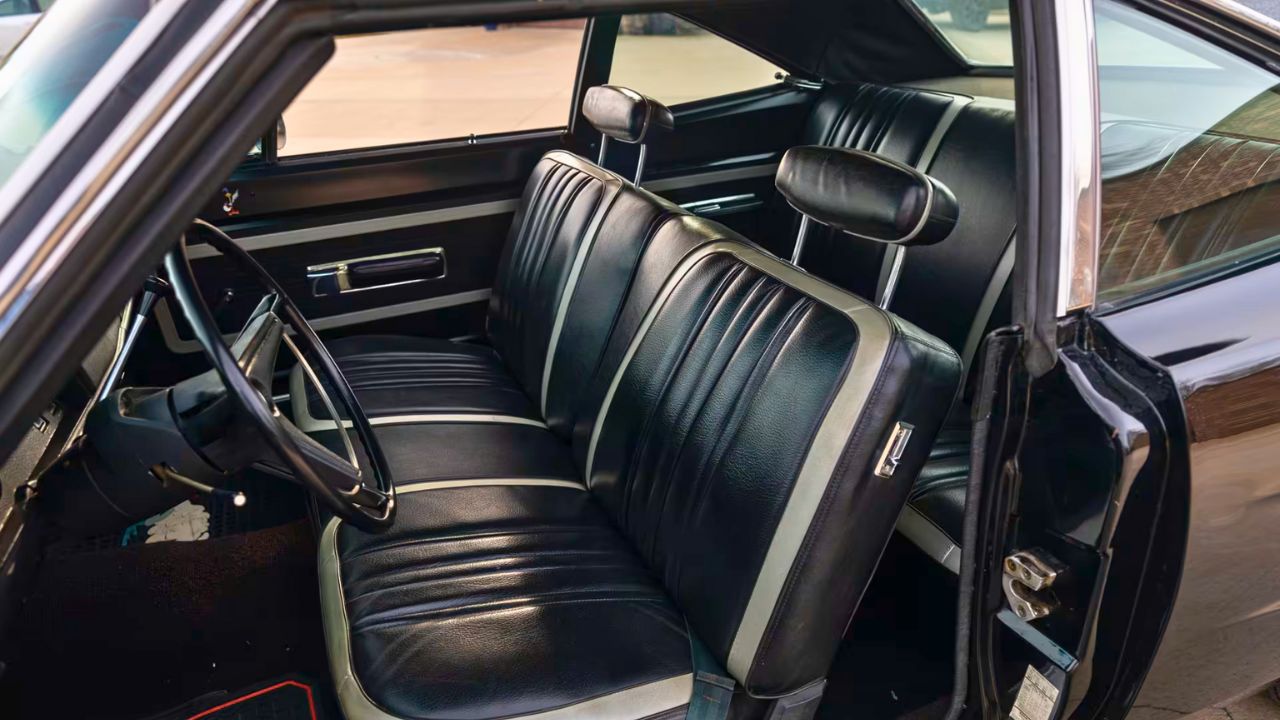
The black interior wasn’t flashy, but it fit the car. Bucket seats, center console, and a no-nonsense dash layout kept things driver-focused. You didn’t get wood grain or frills—you got gauges and grip.
The materials were tough and utilitarian, which made sense for a car built to be driven hard. It was a place where you focused on the road, the revs, and the feel of the car—not a place for lounging. The vibe inside matched the rest of the build: serious, fast, and ready.
Built to Turn and Stop, Too

Up front, the car rode on Chrysler’s torsion bar suspension, with leaf springs out back and a front sway bar to help with body roll. It wasn’t fancy, but it worked well—especially with the right tires.
Power steering made low-speed handling easier without killing road feel. Brakes were power-assisted drums unless optioned otherwise, but they held their own if properly maintained. The suspension geometry gave the car some balance—not corner carver stuff, but enough to stay planted when the throttle was doing its job.
The Horn That Made You Look

Every 1970 Road Runner came with the famous “Beep Beep” horn—licensed from Warner Bros. and completely unlike anything else on the road. It was playful, but not a gimmick. Everyone knew what it meant.
In traffic or at a car show, that horn made people turn their heads. It became a calling card for the model and fit the Road Runner’s whole character: quick, clever, and more than ready to leave someone in the dust. Even on a triple black bruiser like this one, the horn stayed.
Assembled for Speed, Not Flash
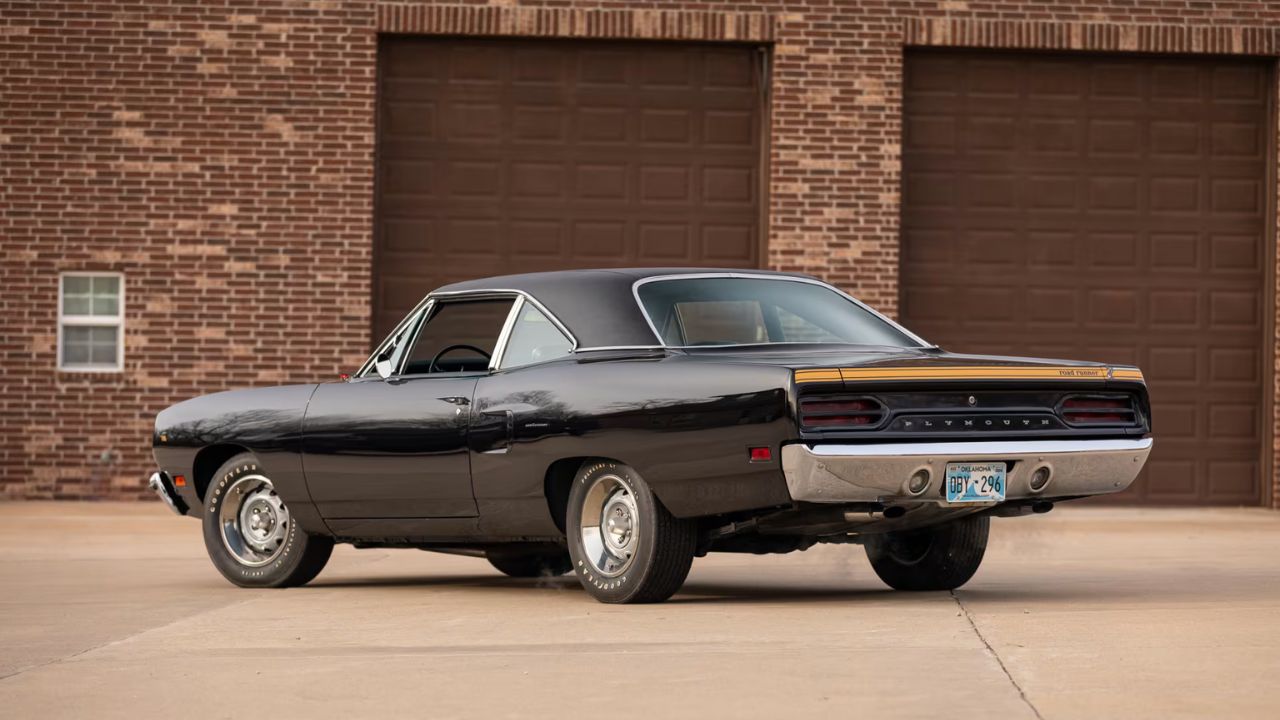
Cars like this weren’t built to sit in showrooms. They were meant to be ordered by people who knew what they wanted and didn’t need the salesman’s pitch. A coupe with a V-Code engine and TorqueFlite? That was a street fighter.
Assembly happened in plants like Lynch Road and St. Louis, where Mopar’s muscle lineup was rolling fast and heavy. Options were added by hand, and builds like this one reflect the customer’s focus: performance first. It didn’t wear stripes and chrome—it wore powertrain and intent.
Still a Heavy Hitter Today
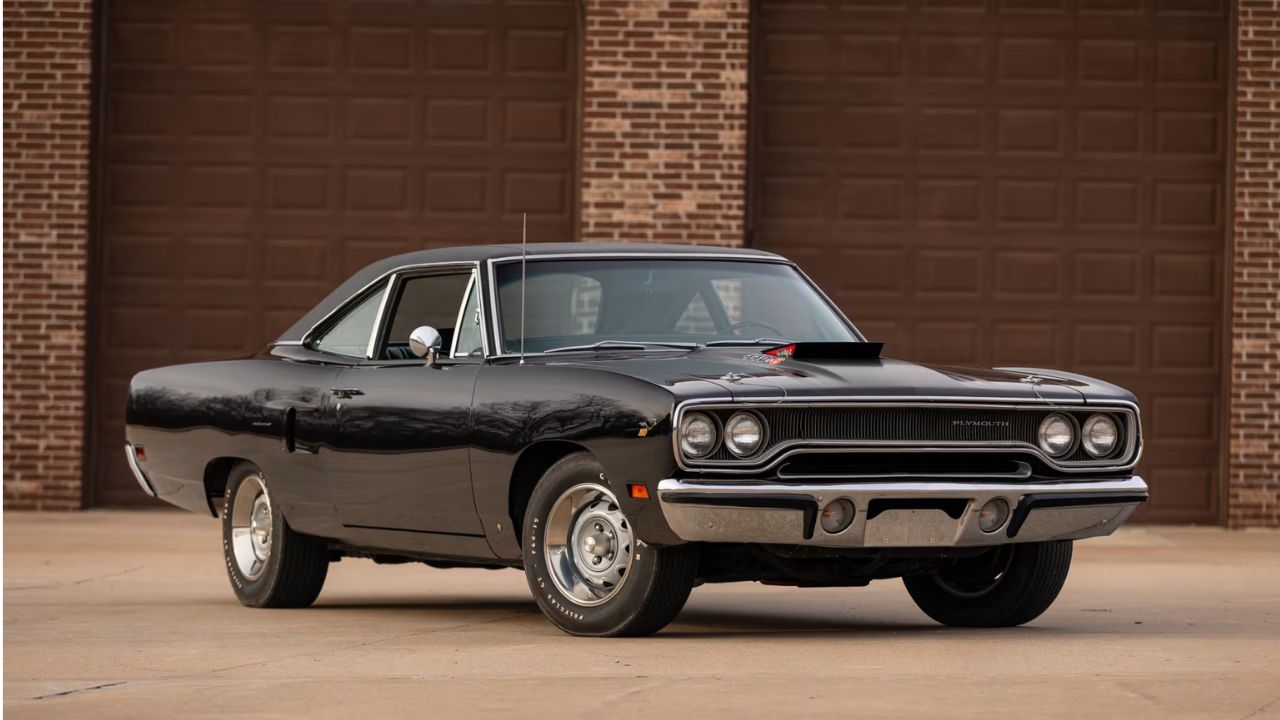
Fifty-plus years on, a triple black V-Code coupe with matching numbers and factory options like this holds real weight. It’s not just rare—it’s well-optioned in a way that speaks directly to people who get these cars.
It’s not the one everyone bought. It’s the one a few smart, lucky drivers ordered right—and that makes it matter now. In a market full of clones and tribute builds, having the real deal means something. This one doesn’t need hype—it’s got history, the specs, and the street cred baked in.
Like what you read? Here’s more by us:
*Created with AI assistance and editor review.

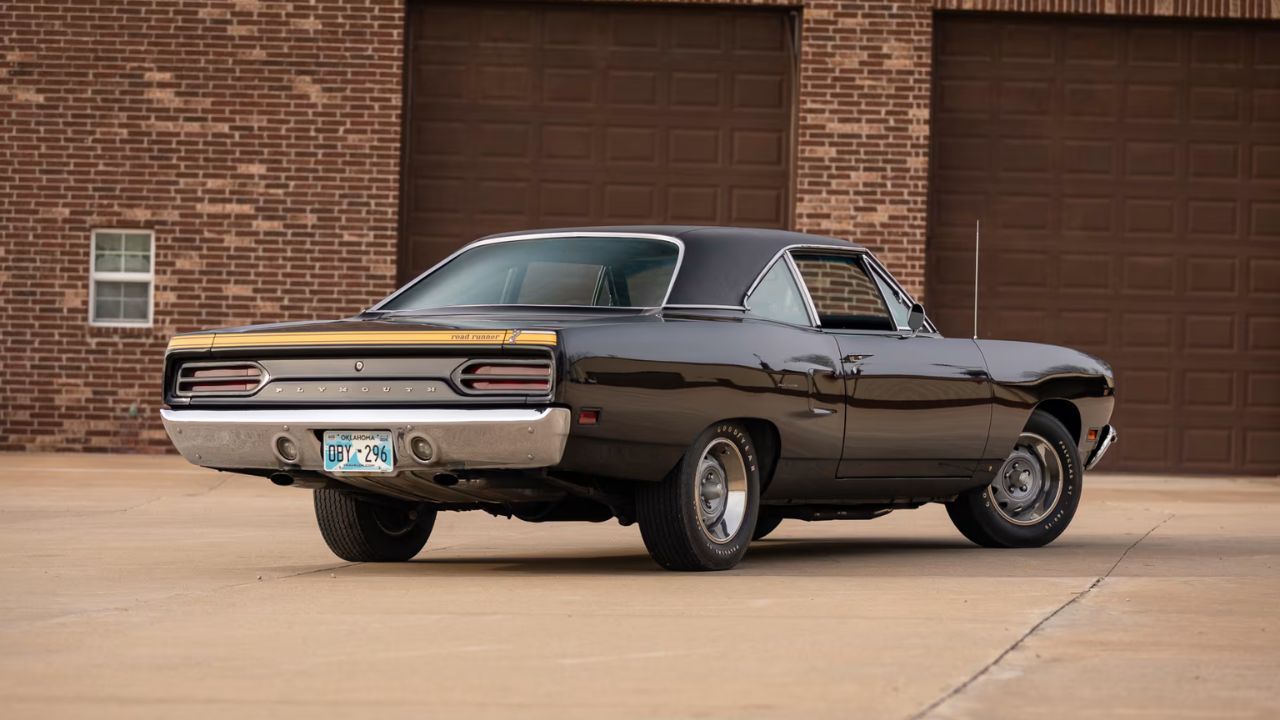
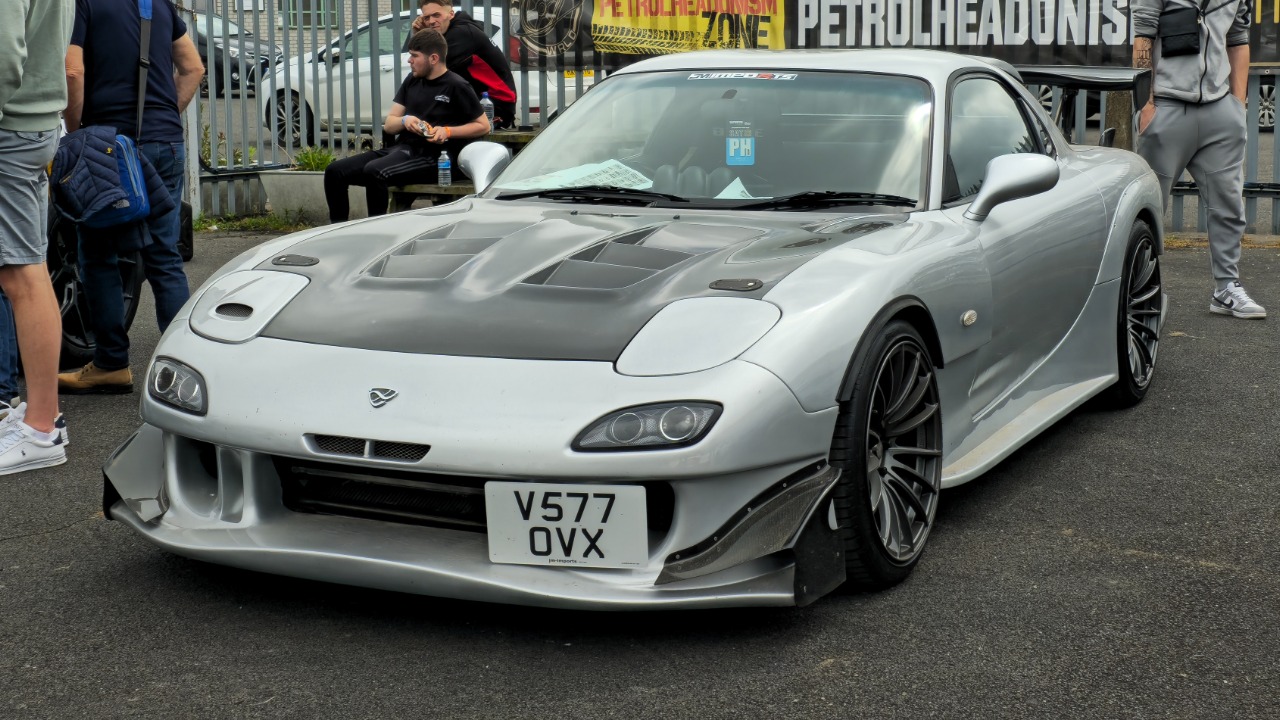
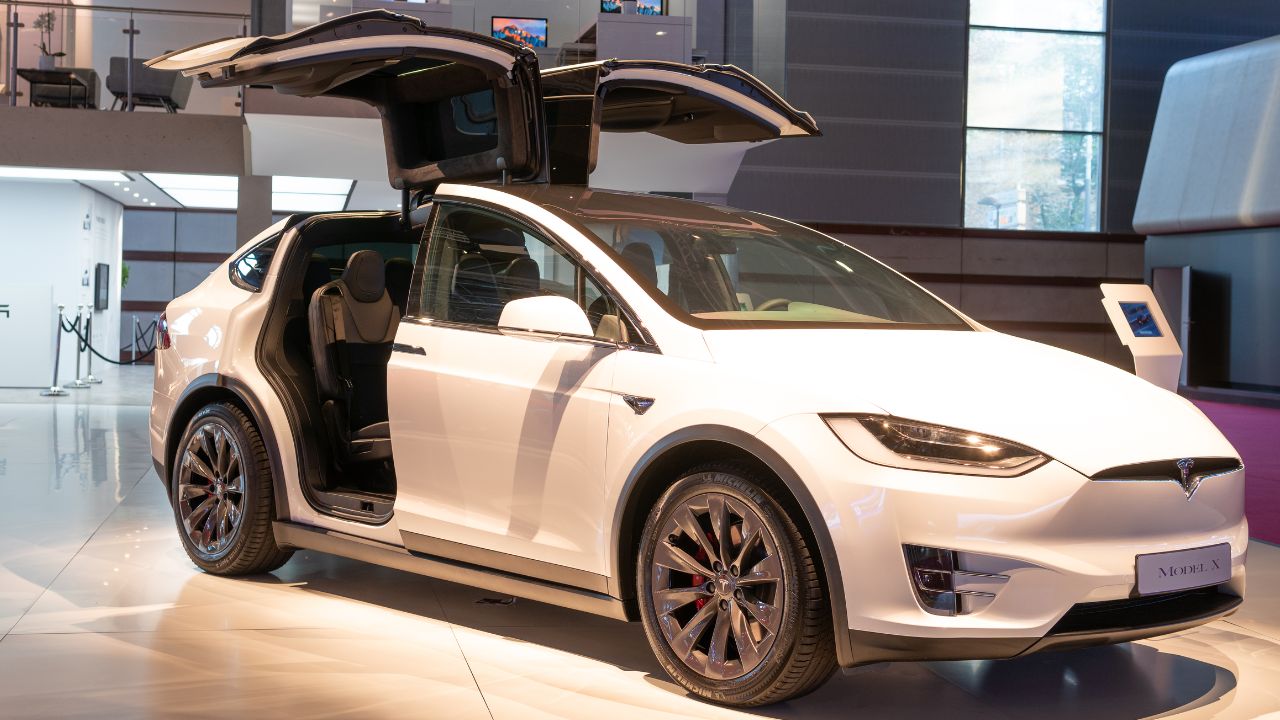
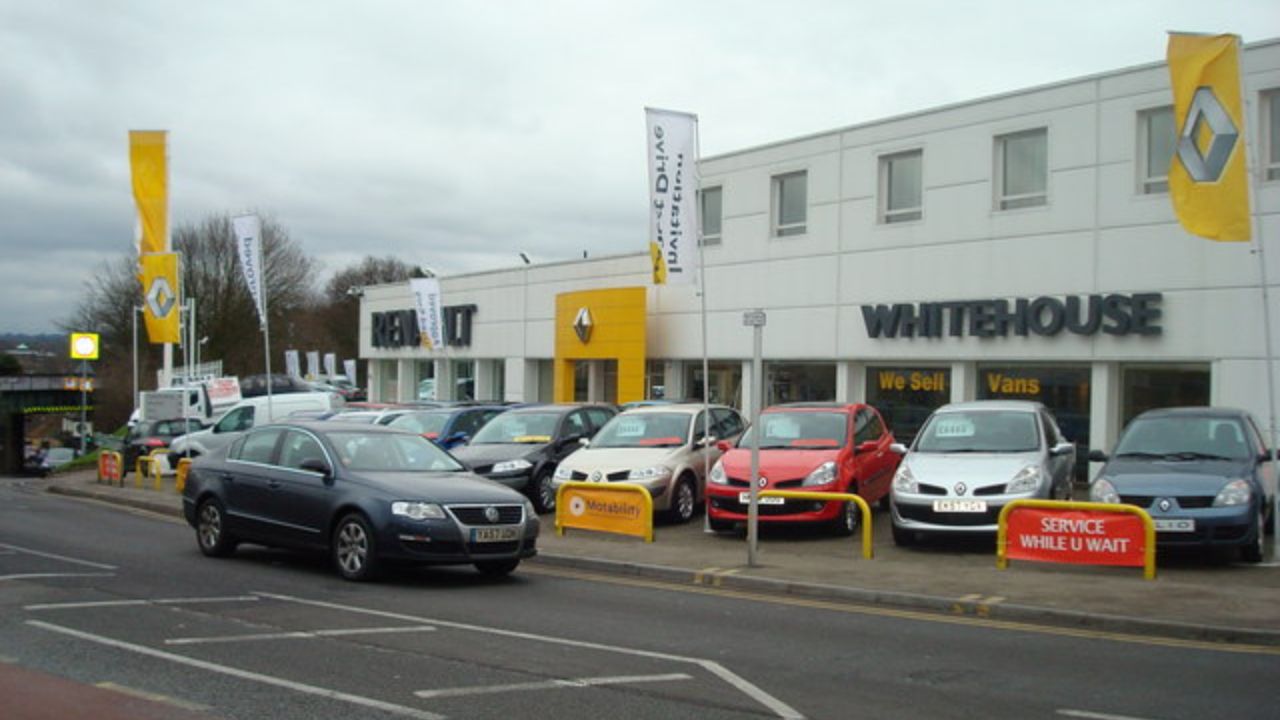
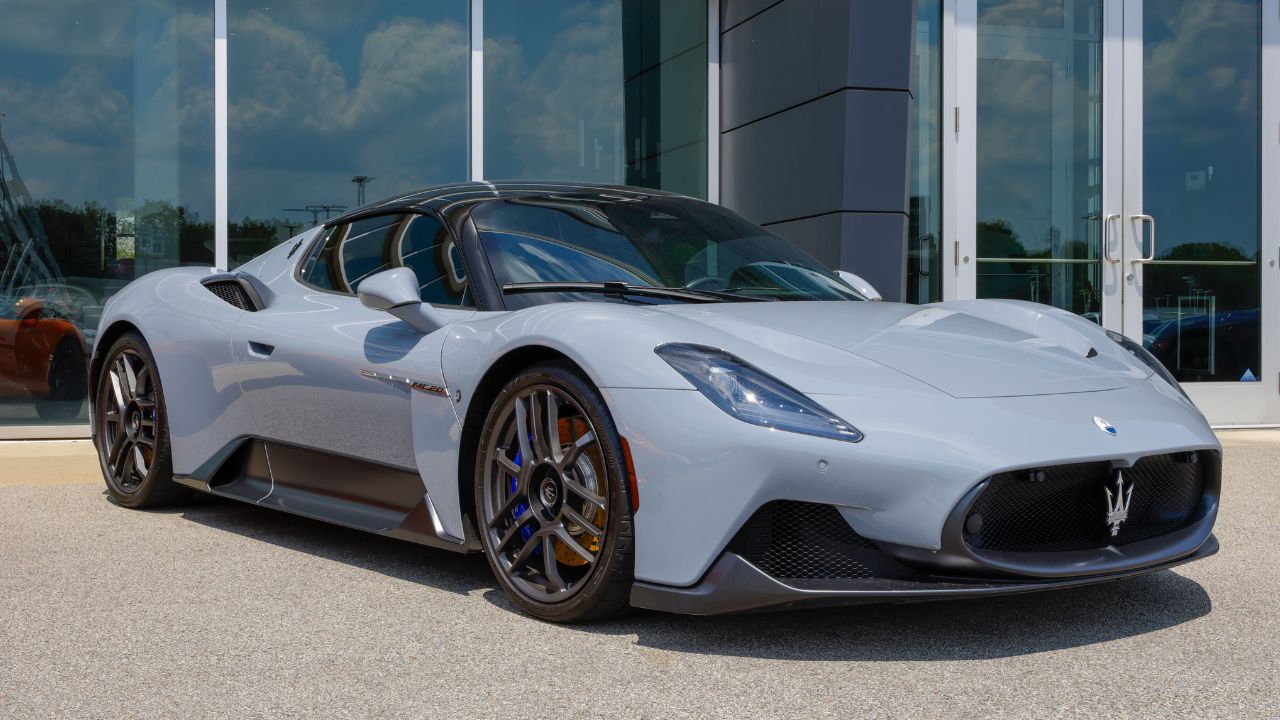
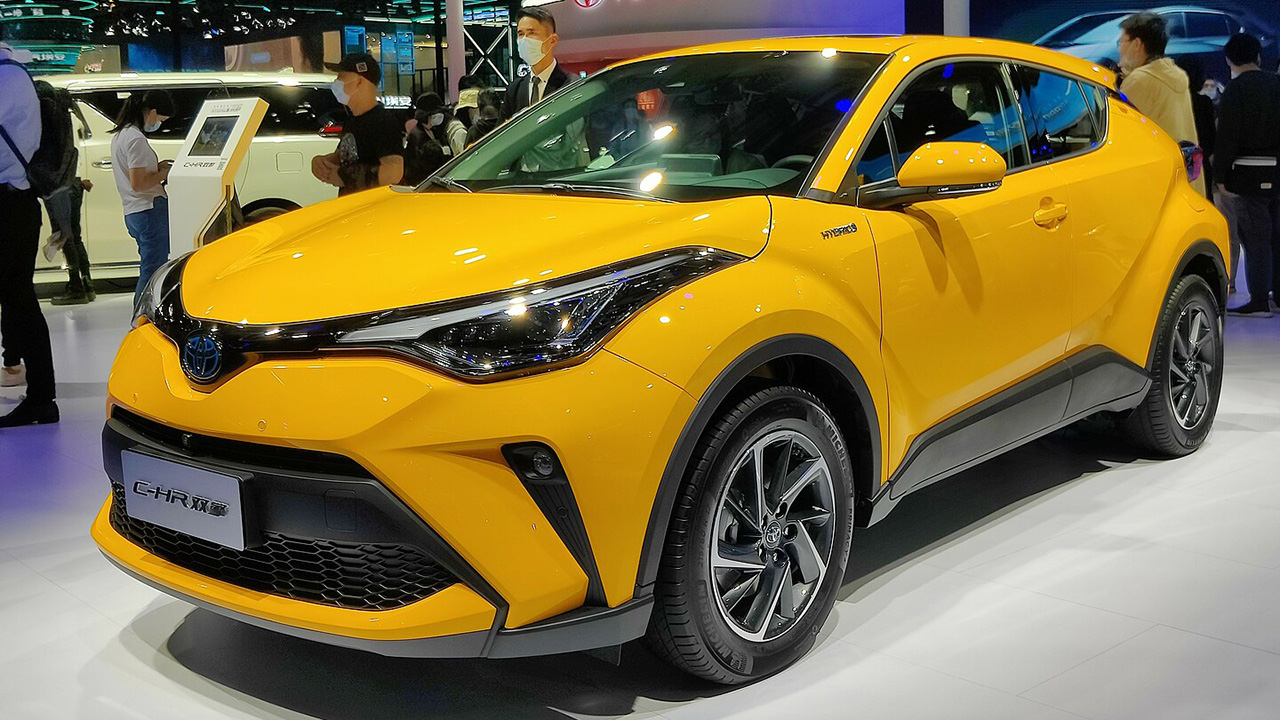
Leave a Reply